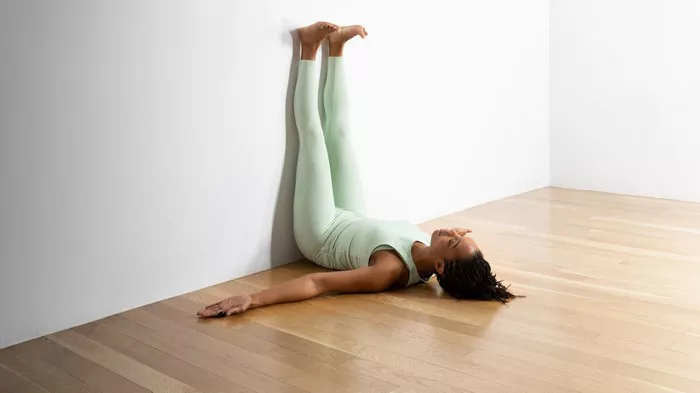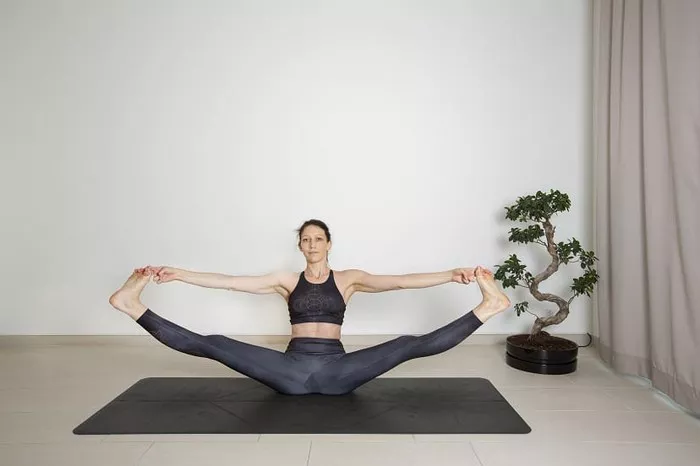Vinyasa yoga, often hailed as a dynamic and flowing form of yoga, has gained immense popularity in recent years for its ability to seamlessly blend breath with movement. While its fluid sequences and emphasis on synchronizing breath with postures can offer a myriad of benefits, many beginners often wonder: Is Vinyasa yoga hard for beginners?
In this comprehensive guide, we delve into the intricacies of Vinyasa yoga to provide insights into its accessibility for beginners, tips for easing into the practice, and the potential challenges one might encounter along the way.
Understanding Vinyasa Yoga
Vinyasa yoga, derived from the Sanskrit word “nyasa,” meaning “to place,” and the prefix “vi,” meaning “in a special way,” is characterized by its fluid and dynamic nature. Unlike some other forms of yoga that focus on holding static postures, Vinyasa yoga emphasizes smooth transitions between poses, creating a continuous flow of movement.
Central to Vinyasa yoga is the coordination of breath with movement. Practitioners are encouraged to link each movement with either an inhalation or exhalation, fostering a sense of mindfulness and presence on the mat. This synchronization not only enhances the physical aspect of the practice but also promotes mental clarity and focus.
Accessibility for Beginners
For beginners, the dynamic nature of Vinyasa yoga might seem daunting at first glance. The seamless transitions between poses and the need to synchronize breath with movement can present challenges for those who are new to the practice. However, Vinyasa yoga is inherently adaptable, making it accessible to practitioners of all levels, including beginners.
One of the key benefits of Vinyasa yoga is its versatility. Instructors often provide modifications and variations for each pose, allowing beginners to tailor the practice to their individual needs and abilities. Additionally, Vinyasa classes typically offer a range of intensity levels, from gentle and restorative flows to more vigorous sequences, providing beginners with the opportunity to gradually build strength, flexibility, and endurance.
Tips for Beginners
While Vinyasa yoga can be challenging for beginners, there are several tips and strategies that can help ease the transition into the practice:
1. Start Slow: Begin with a beginner-friendly Vinyasa class or a slower-paced flow to familiarize yourself with the basic poses and transitions. Focus on mastering the foundational elements of the practice before progressing to more advanced sequences.
2. Listen to Your Body: Pay attention to how your body feels during each pose and transition. Honor any limitations or discomfort you may experience and modify the poses as needed to ensure a safe and enjoyable practice.
3. Focus on Breath Awareness: Cultivate mindfulness by focusing on your breath throughout the practice. Use the breath as a guide, coordinating each movement with either an inhalation or exhalation to create a sense of fluidity and ease.
4. Be Patient and Persistent: Like any new skill, mastering Vinyasa yoga takes time and practice. Be patient with yourself as you navigate the challenges of the practice and celebrate your progress along the way.
5. Seek Guidance: Consider attending beginner-specific Vinyasa classes or workshops led by experienced instructors who can provide personalized guidance and support. Don’t hesitate to ask questions or seek clarification on any aspect of the practice that may be unclear.
Potential Challenges
While Vinyasa yoga offers numerous benefits for beginners, it’s essential to be aware of potential challenges that may arise:
1. Physical Demands: The dynamic nature of Vinyasa yoga can be physically demanding, especially for beginners who may not yet have developed strength or flexibility. Be prepared to experience muscle soreness and fatigue as you build endurance and stamina over time.
2. Mental Focus: Synchronizing breath with movement requires a certain level of mental focus and concentration. Beginners may find it challenging to maintain awareness of their breath while simultaneously moving through the poses. Practice patience and persistence as you cultivate mindfulness on the mat.
3. Risk of Injury: Without proper alignment and technique, beginners may be at risk of injury, particularly during more challenging poses or transitions. Always prioritize safety and listen to your body, avoiding any movements or poses that cause pain or discomfort.
Conclusion
While Vinyasa yoga can present challenges for beginners, it also offers a wealth of opportunities for growth, self-discovery, and transformation. By approaching the practice with an open mind, patience, and persistence, beginners can reap the countless benefits of Vinyasa yoga, from improved strength and flexibility to enhanced mental clarity and relaxation.
Remember, yoga is a journey, not a destination. Embrace the process, honor your body, and enjoy the journey of self-exploration and personal growth that Vinyasa yoga has to offer. With dedication and practice, you’ll find that what once seemed difficult or daunting becomes accessible and deeply rewarding.
FAQs:
What is the easiest type of yoga for beginners?
The easiest type of yoga for beginners often includes Hatha yoga. Its gentle pace and focus on basic poses make it accessible for newcomers, allowing them to build a strong foundation in yoga practice without feeling overwhelmed.
What level is Vinyasa yoga?
Vinyasa yoga is typically considered an intermediate to advanced level practice. Its dynamic and flowing sequences, coupled with synchronized breathwork, require a certain level of strength, flexibility, and body awareness. While modifications and variations are often provided, beginners may find Vinyasa challenging due to its fast-paced nature and emphasis on continuous movement.
What is the most difficult yoga style?
Bikram yoga, also known as hot yoga, is often considered one of the most physically demanding yoga styles. Practiced in a heated room with temperatures typically around 105°F (40.6°C), Bikram yoga consists of a set sequence of 26 poses and two breathing exercises, challenging practitioners both physically and mentally. The intense heat and repetitive nature of the sequence can make Bikram yoga particularly challenging for beginners and experienced yogis alike.
















